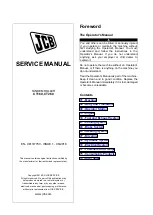
8 Pin Headers
Quantity Designators Done
8 J2-J9
6 Pin Headers
Quantity Designators Done
2 J10-J11
3 Pin Headers
Quantity Designators Done
1 J12
2 Pin Headers
Quantity Designators Done
2 J1,
J13
IC Sockets
Once all of the header connectors are installed, go ahead and put in the IC sockets.
Again, make sure they sit flat and level on the surface of the PCB. The same trick can be
used to “tack” the IC sockets down before soldering the rest of the pins. In this case,
solder two pins in opposite corners of the socket. Though it’s a bit more difficult to do,
you still have the opportunity to burn the finger that is holding the socket flat, so be sure
to do that. Van Gogh suffered the pain of removing an ear in the name of love or art, so
what’s a burned finger in the grand scheme of things?
Again, your IC sockets will probably be keyed to go in a certain direction, telling you
which way to install the IC (when the time comes). Be sure to install them pointing in
the right direction. As a point of interest, you’ll notice the intrepid board designer
designed the Klee PCBs with all of the ICs and connectors in the same direction, where
pin 1 is pointed to the “top” of the board. That makes this task, and later assembly, much
less complicated than it could have been, had the designer possessed the slightest of truly
mean streaks.
Though they don’t appear on the schematics and prints, the IC socket reference
designators begin with “X”. X6 is the socket U6 plugs into, X4 is the socket U4 plugs
into, and so forth. Note that all of the sockets, with the exception of X6 and X7, are the
standard “narrow” sockets. X6 and X7 accommodate the fat, cockroach sized CD4034s.
72
















































